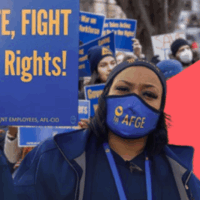Washington, DC—Since President Trump took office, the federal government has sharply increased spending to outsource work to temp agencies, more than doubling the amount spent on temporary help services in the past two years, according to a new analysis of government contracting data released today.
Taxpayers are footing the bill for the costs associated with using temporary providers, even as the practice of outsourcing has been shown to degrade job quality and reduce accountability for the quality of services provided.
The report, “Temping Out the Federal Government,” finds that the federal government increased spending on temporary help service contracts fivefold over the last 10 years—from $323 million in 2008 to $1.7 billion in 2018. By far, the largest increase occurred in the past two years, when spending jumped from $812 million in 2016 to $1.7 billion in 2018.
“Outsourcing work to temporary help service agencies degrades the quality of these jobs,” said Laura Padin, senior staff attorney at the National Employment Law Project and co-author of the report. “Temporary help services workers earn, on average, 41 percent less than workers in standard arrangements. And because the very nature of their work is precarious, temporary workers endure constant uncertainty about job security. If the federal government is going to use temporary help service contractors, it must hold them accountable for providing well-paying jobs to workers and quality care to the consumers of their services.”
The privatization of government-provided healthcare services is the largest factor driving increased use of temporary help services. Healthcare-related temporary help service contracts for five government entities—the Veterans Administration (VA), the Indian Health Service (IHS), the Department of Defense, the Bureau of Prisons, and the Federal Occupational Health clinics—totaled $884 million in 2018, accounting for 47 percent of all federal temporary help contracts for that year. At the VA and HIS, for example, where provider vacancies are a problem, the agencies have chosen to fill the positions with “perma-temps” rather than seeking out more stable, longer-term solutions.
“Millions of Americans rely directly on the federal government for healthcare services, and they deserve the benefits of a stable workforce,” said Chris Schwartz, principal at Blue Pencil Strategies and a co-author of the report. “There are undoubtedly many dedicated women and men working in these temporary positions, but they can’t always do their best work if they have to battle constant turnover and uncertainty. We need the federal government to prioritize quality services, and that means hiring permanent workers.”
The report recommends that the federal government take action to increase the accountability of temporary help service providers and ensure that these providers treat their workers fairly and provide real value to the federal government and taxpayers, including:
- Instituting annual reviews and regular audits of all temporary help service contracts that analyze the costs and benefits of each contract relative to federal insourcing to determine whether each contract should be renewed; and
- Enacting living wage and prevailing wage protections and requiring certain benefits—such as paid sick and vacation leave and employer-sponsored health insurance—for workers assigned to temporary help service contracts, to ensure that these contracts produce well-paying jobs with strong benefits and do not simply replace good-paying government jobs with low-road contractor jobs.
Read the full report: Temping Out the Federal Government
###
The National Employment Law Project is a non-partisan, not-for-profit organization that conducts research and advocates on issues affecting low-wage and unemployed workers. For more about NELP, visit www.nelp.org. Follow NELP on Twitter at @NelpNews.




